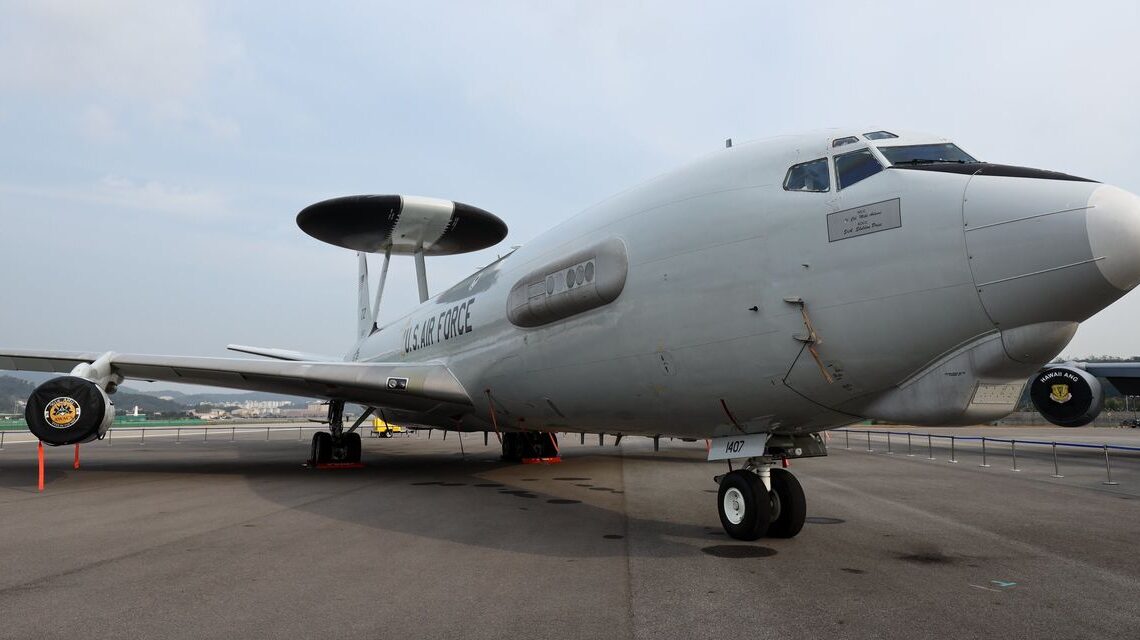Updated May 4, 2022 7:49 pm ET
A U.S Air Force E-3 AWACS (Airborne Warning and Control System) aircraft at Seoul Air Base in Seongnam, South Korea, Oct. 14, 2019.
Photo:
SeongJoon Cho/Bloomberg News
The press has now disclosed what everyone suspected—that the U.S. is helping Ukraine by relaying the coordinates of Russian military targets. The mission makes this a good moment to focus on the gaps the U.S. Air Force may be accepting in battlefield surveillance, an example of growing U.S. defense risks.
The Air Force announced last month that it plans to buy the E-7 Wedgetail to replace some of its E-3 Airborne Warning and Control System fleet. The E-3, known as AWACS, is a flying pair of binoculars that can peer into the battle space to spot friends and enemies, and coordinate strikes. It’s a powerful platform. To borrow an illustration from Air Force Magazine, “an AWACS flying over New York City could manage the aerial battle as far away as Boston, Mass., and Washington, D.C., at the same time.”
AWACS aircraft have been operating near the border of Ukraine. The U.S. hasn’t been advertising these missions, but the planes have almost certainly been essential in gathering and sharing information. In a future fight, whether in the Pacific or elsewhere, these assets would help the U.S. find and shoot the enemy first. America’s adversaries understand the value: Satellite imagery has suggested the Chinese have a mock target of a parked…

